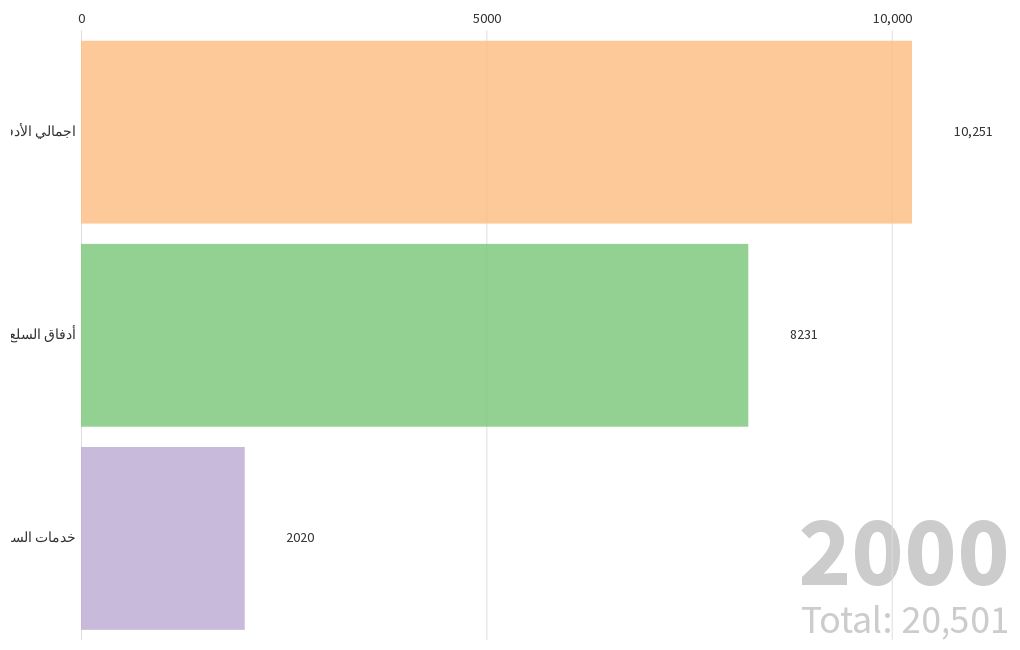G-7 De Minimis Tariff Talks On Chinese Goods: Implications For Global Trade

Table of Contents
Understanding De Minimis Tariffs and Their Significance
De minimis tariffs refer to the low-value threshold below which imported goods are exempt from customs duties. Essentially, they represent a value limit; shipments below this limit are typically not subject to tariffs or other import taxes. This system simplifies customs procedures, particularly beneficial for small businesses and e-commerce transactions involving smaller shipments.
Current de minimis thresholds vary significantly across G-7 countries. While some countries have relatively high thresholds, others maintain lower limits, creating inconsistencies that impact international trade. This disparity affects small businesses and e-commerce disproportionately.
- Lower thresholds increase import costs for small businesses: This can hinder the ability of small and medium-sized enterprises (SMEs) to compete in global markets.
- Higher thresholds can boost e-commerce sales from China: Lower import costs make Chinese goods more competitive in G-7 countries, potentially impacting domestic businesses.
- Harmonization of thresholds promotes fair competition: A unified approach across G-7 nations could level the playing field, fostering a more balanced global trade environment. The lack of harmonization currently creates an uneven playing field.
The G-7's Proposed Changes and Their Rationale
The G-7's consideration of changes to de minimis tariffs on Chinese goods stems from various factors. Concerns about unfair trade practices, particularly regarding subsidies and dumping, are at the forefront. Additionally, the rapid growth of e-commerce and the influx of Chinese goods have prompted discussions about protecting domestic industries.
While specific proposals vary, the discussions often revolve around raising or lowering the thresholds. Some advocate for lowering thresholds to address concerns about unfair competition and protect domestic industries. Conversely, others argue for maintaining or raising thresholds to streamline trade and foster economic growth.
- Addressing concerns about unfair trade practices: This involves leveling the playing field between domestic and imported goods, focusing on fair competition.
- Protecting domestic industries from cheap imports: Adjusting thresholds can act as a safeguard mechanism for local businesses against potentially damaging competition.
- Promoting a level playing field for businesses: A unified approach would help reduce trade frictions and encourage healthier competition.
- Potential impact on consumer prices: Changes to tariffs can directly influence consumer prices, potentially increasing costs for certain goods.
Economic Implications for Different Stakeholders
The proposed changes will have far-reaching economic consequences for various stakeholders. Chinese exporters might face increased costs and reduced competitiveness if thresholds are lowered. Conversely, G-7 importers might see higher prices for goods if tariffs increase. This can affect consumer spending and purchasing patterns.
- Increased costs for Chinese exporters: Higher tariffs can reduce the profitability of exporting to G-7 markets.
- Potential price increases for consumers in G-7 countries: Consumers could face higher prices for goods imported from China.
- Shift in global manufacturing and sourcing patterns: Businesses might explore alternative sourcing options to mitigate increased costs from China.
- Opportunities for diversification of supply chains away from China: The changes could incentivize businesses to diversify their supply chains, reducing reliance on a single source.
The Role of the WTO and International Trade Rules
Any changes to G-7 de minimis tariffs must comply with World Trade Organization (WTO) rules and regulations. Significant adjustments could trigger trade disputes and retaliatory measures from China or other affected nations.
- Potential challenges to WTO principles of non-discrimination: Changes could be challenged if perceived as discriminatory against specific countries.
- Risk of trade wars and escalation of tensions: Retaliatory measures could escalate into broader trade conflicts.
- Importance of multilateral cooperation and negotiation: A collaborative approach, respecting WTO guidelines, is vital to minimize negative impacts.
Geopolitical Implications and Future Outlook
The G-7's tariff policies are deeply intertwined with broader geopolitical tensions, particularly concerning the US-China relationship. These trade negotiations are not merely economic; they are also a tool of geopolitical leverage. The long-term implications for global trade governance are significant.
- Use of tariffs as a tool of geopolitical leverage: Tariff adjustments can be employed strategically to influence geopolitical relations.
- Impact on global economic growth and stability: Trade friction can hinder economic growth and disrupt global stability.
- Potential for increased protectionism and trade barriers: The changes might trigger a wave of protectionist measures globally.
Conclusion
The G-7's deliberations on de minimis tariffs for Chinese goods present a complex challenge with far-reaching implications for global trade. Balancing the need to protect domestic industries with the desire for fair competition and economic growth requires careful consideration. Understanding the economic and geopolitical ramifications is crucial. Continued monitoring of developments regarding G-7 de minimis tariffs and their effects on global trade is essential for businesses and policymakers alike. Stay informed about these crucial changes in international trade policy.

Featured Posts
-
 Peremozhtsi Yevrobachennya Ostanni 10 Rokiv Kudi Voni Znikli
May 24, 2025
Peremozhtsi Yevrobachennya Ostanni 10 Rokiv Kudi Voni Znikli
May 24, 2025 -
 The Last Rodeo Neal Mc Donoughs Standout Performance
May 24, 2025
The Last Rodeo Neal Mc Donoughs Standout Performance
May 24, 2025 -
 Legal Action Amsterdam Residents Sue City Over Tik Tok Driven Crowds At Snack Bar
May 24, 2025
Legal Action Amsterdam Residents Sue City Over Tik Tok Driven Crowds At Snack Bar
May 24, 2025 -
 Atfaq Washntn Wbkyn Altjary Ydem Artfae Mwshr Daks Alalmany Fwq 24 Alf Nqtt
May 24, 2025
Atfaq Washntn Wbkyn Altjary Ydem Artfae Mwshr Daks Alalmany Fwq 24 Alf Nqtt
May 24, 2025 -
 France Revisits The Dreyfus Affair A Push For Recognition
May 24, 2025
France Revisits The Dreyfus Affair A Push For Recognition
May 24, 2025
